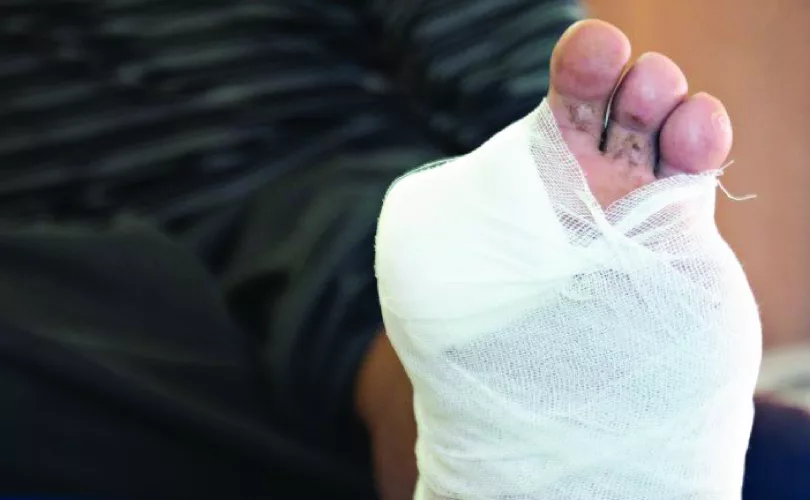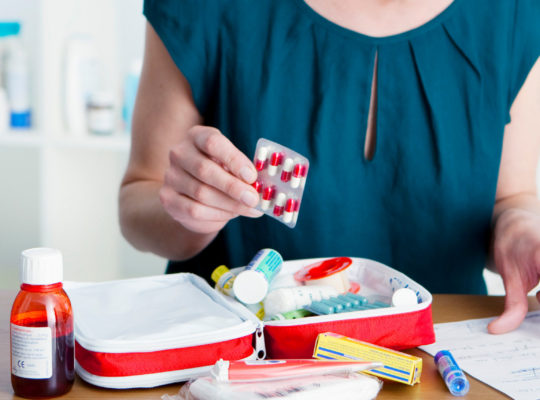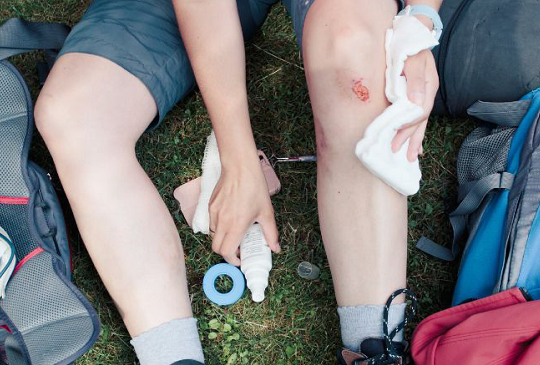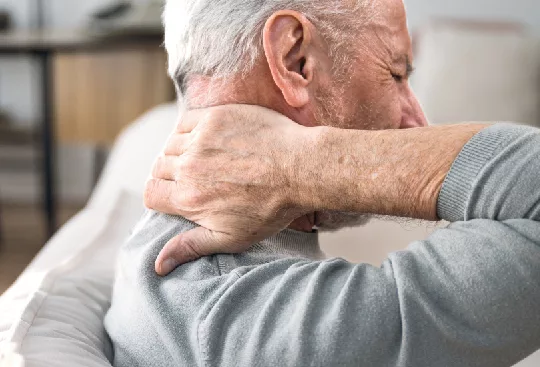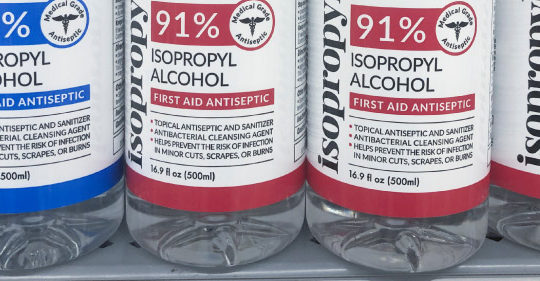As with any wound that seemingly refuses to heal, it can get frustrating and worrying for those who either live alone, or who have limited access to healthcare and treatment.
Luckily though, there have never been so many resources available to allow you to properly care for a wound – not to mention encouraging timely, safe healing until you are back to your old self in no time at all.
But what exactly can cause non-healing wounds, and what are the best holistic treatment plans to adopt?
What Are Non-Healing Wounds?
Non-healing wounds are, as their name suggests, wounds that (for whatever reason) do not heal in what would be considered a conventional timeline.
This could be a result of their location on the body – such as their proximity to tight skin, or their being in a location that sees frequent movement – or it could be due to the nature of the wound itself – with wounds such as ulcers and abscesses being especially tricky to heal in some cases.
What Are The Causes?
The answer to this can obviously be multiple things, and very much depends on the wound in question, however generally speaking, non-healing wounds are caused by underlying conditions (such as diabetes and chronic illnesses), poor body circulation, nutritional status, patient age, and even body size.
Our bodies are designed to heal wounds at a certain pace, and in some cases, if this pace is not met, then it could be a result of the conditions within the body – things that doctors will take a closer look at if you present any signs of non-healing in your wounds.
What Are Some Common Examples?
While there are numerous different types of non-healing wounds, there are some that are more common than others. Many of these can be serious if not treated in the correct way, so it is always best to consult your healthcare provider if you are experiencing any of these wounds yourself.
Surgical Wounds
Surgical cuts can be an example of a common non-healing wound, and in many cases these can be from both invasive major surgery, and minor surgery – depending on the area of the body that was operated on.
This can be especially true if the surgery took place on a sensitive or tight part of the body- such as the head – or if the wound is in a part of the body that sees a lot of rubbing, abrasions, and movement – such as the hands, feet, joints, and groin.
Traumatic Wounds
Any form of traumatic and intense wound – such as burns and deep cuts – can take longer to heal, and can likewise be affected by day to day movement, washing, and accidents.
This is also true if the injury is in a cumbersome place – such as the hands, feet, joints, groin, or on the back, where it can be disturbed during sleep.
Venous Ulcers (Legs & Ankles)
Venous ulcers – usually found on the legs and ankles – are renowned for being slow to heal, and even properly treated ulcers can take 3 to 4 months to return to normal.
This is partly due to their location on the body, the pressure they are subjected to during movement, and the amount of unforeseen snags, rubbing, and accidents that can occur within the extended healing period.
Arterial Ulcers (Legs & Feet)
As with venous ulcers, arterial ulcers – especially those on the legs and feet – are subject to a lot of pressure on a day to day basis, and this is one of the main reasons why they can take so long to heal.
Generally speaking, arterial ulcers in those areas tend to take a week or two in healthy people, but can take much longer in those with underlying conditions and poor bodily health.
Pressure Sores/Bed Sores
As with ulcers, sores made by pressure or being bed-ridden are also subject to slow healing, and this is due to the repeated rubbing and pressure put upon them during the healing process.
Especially with bed sores, this is unfortunately a catch-22 situation, wherein the presence of sores facilitates the need for rest – something that, unfortunately, was the cause of the sores to begin with.
Diabetic Ulcers
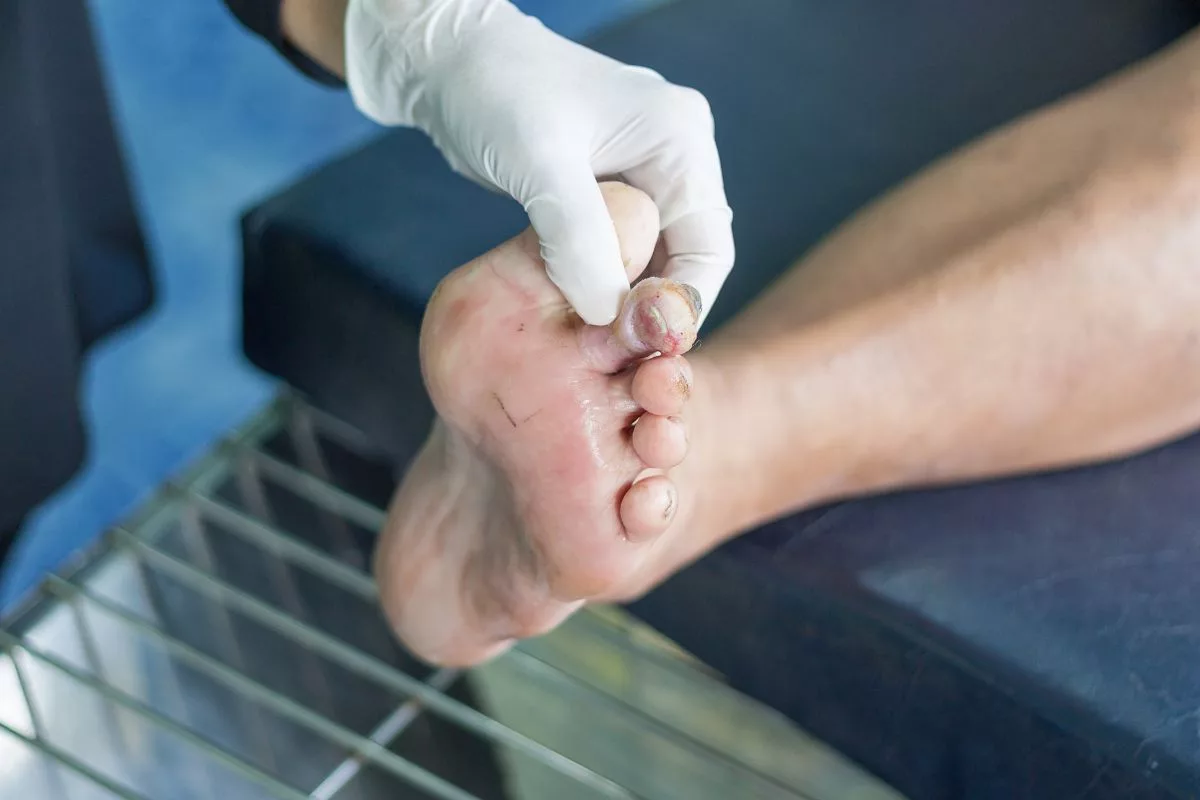
As anyone with diabetes will know, bruising, bleeding, and all manner of other abrasions can cause problems – not to mention taking a long time to heal afterwards. This is especially true of diabetic ulcers, which can take several weeks to heal – even under the best circumstances.
One medicine that can help you in this case is CHROMIUM PICOLINATE. This medicine lowers blood sugar and improves body’s response to insulin.
The Best Treatments For Non-Healing Wounds
Now that we know a little more about non-healing wounds, and the various things that can cause (and exacerbate) their slow healing, it is time for us to take a look at some of the best treatments to speed up healing, and ensure they are back to normal in no time at all.
Many of these are relatively simple lifestyle and hygiene choices, and they can make all the difference when it comes to ensuring the best possible healing for some of the worst injuries.
Proper Hygiene
This is the most important thing when it comes to treating even the most tricky, non-healing wounds, and if proper hygiene isn’t followed during this process, then you leave yourself wide open (literally) to all manner of infections, diseases, and general problems.
These can not only slow down the healing process, but they can also cause potentially life endangering problems too.
Proper hygiene involves ensuring the wound itself is clean and free from bacteria, making sure that dressings are clean and changed regularly, and making sure that any implements or equipment are sterile and clean before use. You can use a prep iodine solution to clean it.
This also means ensuring that the area you are living in is clean too, especially things like your bed, living space, kitchen, and bathrooms – all of which can be breeding grounds for bacteria, and which could cause all manner of problems.
Proper Nutrition
Nutrition is also an important passive factor to ensuring proper healing. This helps our bodies to work as they should – or at least in the best way they are able – and generally means that healing will happen faster and as it should.
This means avoiding processed foods, avoiding alcohol and tobacco, limiting unhealthy ingredients, and partaking in a clean and balanced diet consisting of all the nutrients your body needs to get the job done.
This could also be paired with a regimen of supplements and vitamins to ensure you are getting your quota of nutrients and minerals.
Proper Sleep
Getting your full quota of sleep is also paramount when it comes to encouraging proper healing of wounds – not to mention general body wide health. This is sometimes easier said than done – especially if you are in extreme pain – but it can be a vital part of a healthy lifestyle.
Avoiding Stress
While this too might be easier said than done – especially for those in pain and distress – avoiding stressful situations is key to encouraging proper healing of wounds.
This means trying to live as peacefully as you can day to day – avoiding loud environments, hectic environments, and those with triggers that might elevate your blood pressure and cause you to feel more stress than is normal.
Proper Wound Dressing
A major part in the healing process is the dressing, but this is only effective when done right. Of course, there is no one size fits all approach to dressing – namely because no two injuries are the same – and as such you need to ensure you are taking the right approach for your specific situation.
Generally speaking, the recommended approach will depend on your diagnosis, and the underlying cause of the wound and the slow healing.
This could include things like antimicrobial dressings to limit infection, specialized dressings for better healing, and even dressings that apply gentle amounts of pressure to the area in question.
There might also be cause for moisture retaining dressings that can both absorb excess fluid from wounds and avoid exterior moisture – or even more advanced methods if the severity of the wound is sufficient enough.
Circulation Testing
If your wounds are not showing signs of healing, then circulation testing will be one of the first things your doctors check for. Poor circulation means that the afflicted area might not be getting enough blood supply, and this could cause healing to slow to a standstill if it is bad enough.
By conducting simple tests, doctors can assess whether your circulation could be playing a role in the nature of the wounds healing, and then they can adapt your treatment accordingly.
Hyperbaric Oxygen Therapy (HBOT)
In some cases, it might be necessary for doctors to take greater steps to kickstart the healing process, and in this instance they might suggest HBOT – or hyperbaric oxygen therapy.
This involves the patient breathing pure oxygen that has been placed under pressure with the help of oxygen tubing – thus helping to promote healing and regular function of the cells in the body.
This involves the patient resting inside of a hermetically sealed tube, which is then supplied with the right amount of purified oxygen – and pressure – which is then monitored by doctors throughout the process.
However, this only tends to happen in instances of extreme severity – usually where there are widespread wounds or injuries (or indeed when there are issues with oxygen toxicity and pressure within the body).
Final Thoughts
And there we have it, everything you need to know about non-healing wounds, and the best methods of treatment to encourage the healing process.
It’s true that, when wounds seem to refuse to heal naturally, things can get a little stressful – especially if you live alone and have limited access to healthcare.
Luckily, there are ways and means that you can ensure the best care for both yourself and loved ones, and ensure that any wounds they receive can begin to heal and repair themselves in no time at all.
So if you are looking for the best holistic treatment plan for non-healing wounds, then be sure to give some of these a try. Something tells me you won’t regret it!

